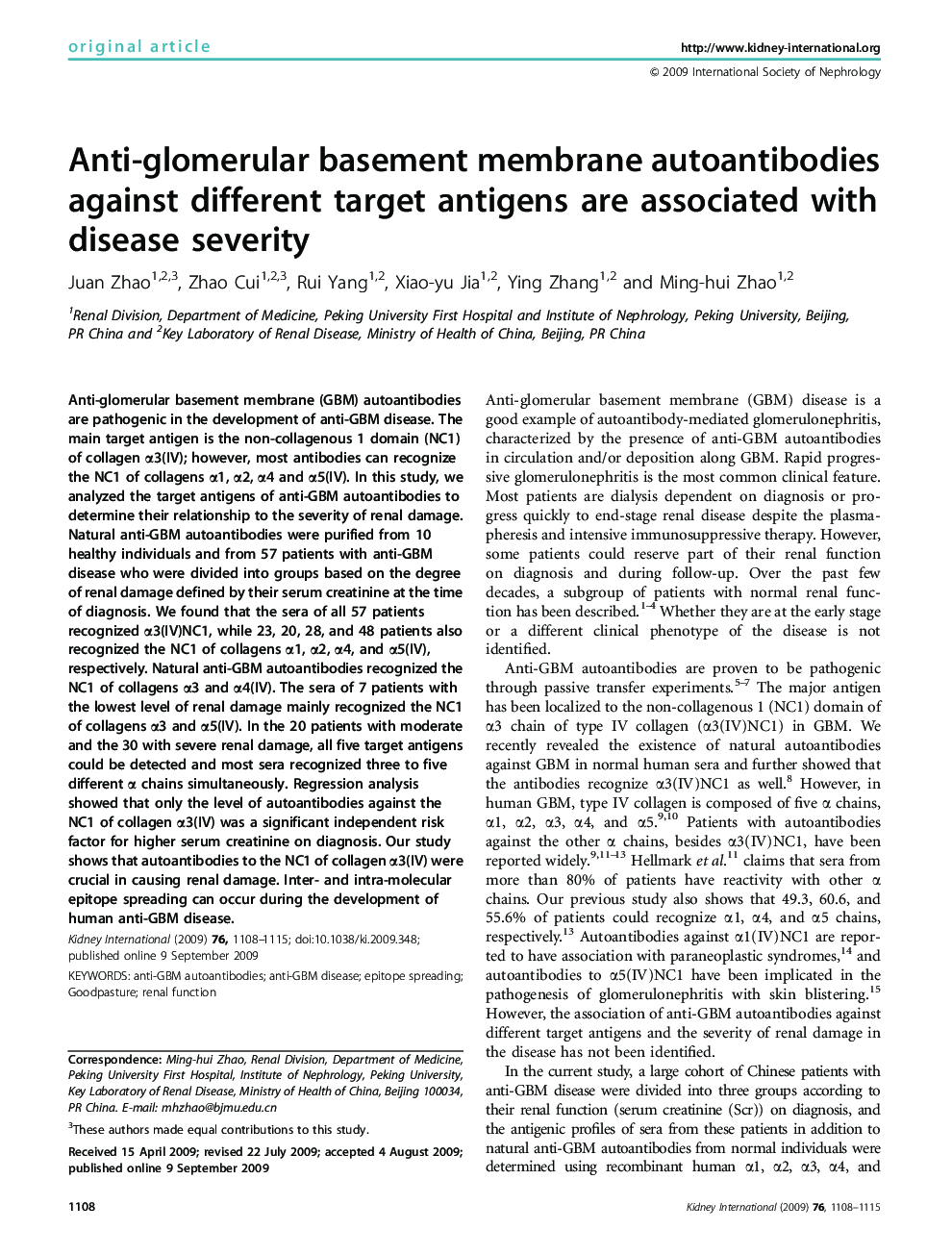| Article ID | Journal | Published Year | Pages | File Type |
|---|---|---|---|---|
| 3885608 | Kidney International | 2009 | 8 Pages |
Anti-glomerular basement membrane (GBM) autoantibodies are pathogenic in the development of anti-GBM disease. The main target antigen is the non-collagenous 1 domain (NC1) of collagen α3(IV); however, most antibodies can recognize the NC1 of collagens α1, α2, α4 and α5(IV). In this study, we analyzed the target antigens of anti-GBM autoantibodies to determine their relationship to the severity of renal damage. Natural anti-GBM autoantibodies were purified from 10 healthy individuals and from 57 patients with anti-GBM disease who were divided into groups based on the degree of renal damage defined by their serum creatinine at the time of diagnosis. We found that the sera of all 57 patients recognized α3(IV)NC1, while 23, 20, 28, and 48 patients also recognized the NC1 of collagens α1, α2, α4, and α5(IV), respectively. Natural anti-GBM autoantibodies recognized the NC1 of collagens α3 and α4(IV). The sera of 7 patients with the lowest level of renal damage mainly recognized the NC1 of collagens α3 and α5(IV). In the 20 patients with moderate and the 30 with severe renal damage, all five target antigens could be detected and most sera recognized three to five different α chains simultaneously. Regression analysis showed that only the level of autoantibodies against the NC1 of collagen α3(IV) was a significant independent risk factor for higher serum creatinine on diagnosis. Our study shows that autoantibodies to the NC1 of collagen α3(IV) were crucial in causing renal damage. Inter- and intra-molecular epitope spreading can occur during the development of human anti-GBM disease.
